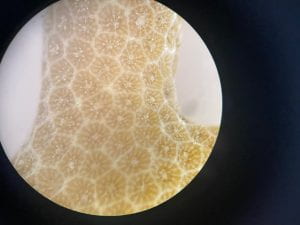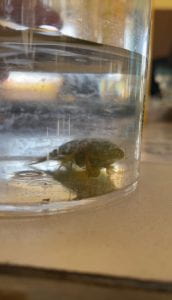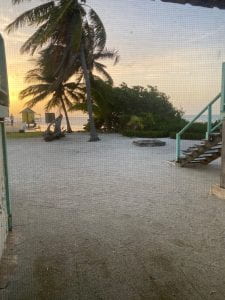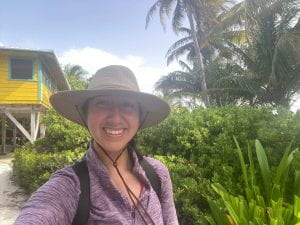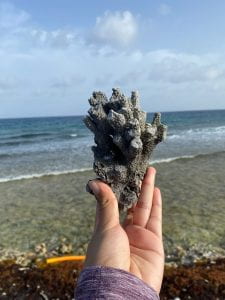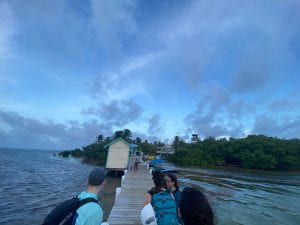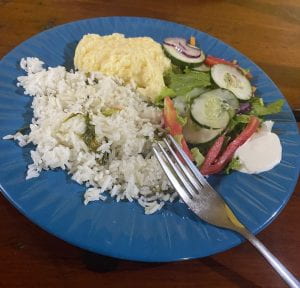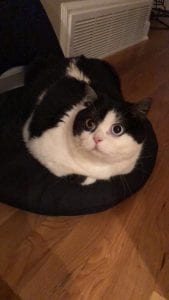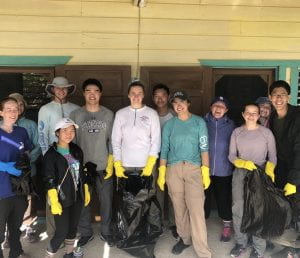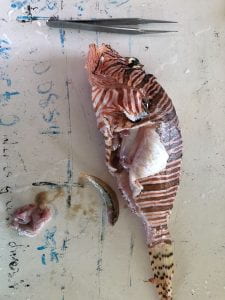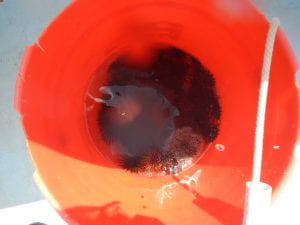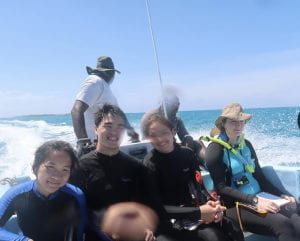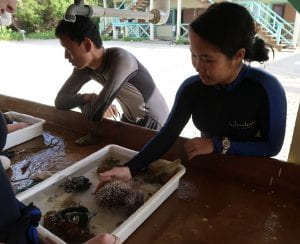Today the day started pretty wonderful, we got to bring many organisms from the local coast to the wet lab and have the many experts in our class identify them and tell us a little about each species. From this activity I really liked looking at things under the microscope, specially I got to look at a cool coral fragment that someone found! I also got to see a mantis shrimp for the first time!
Later in the day, we came up with a new question and went out to test it on different corals than those we had explored earlier in the week. With our research we want to understand if there is some sort of correlation between the amount of sea urchins observed and the amount of live coral. Our question originates from how sea urchins burrow into the corals which may weaken the coral and leave them more susceptible to disease. During our time on the reef patch we collected enough data, yet collecting that data was sure an adventure. The waves were way stronger than we had anticipated and we were constantly pushed into corals or our partners before we got to get the information we needed. Yet thankfully we were able to get data and also collect some urchins which we later examined back in the lab. (Don’t worry, we are taking good care of the sea urchins and will return them home tomorrow!)
We then went to a second patch this time not to work but to do some relaxing snorkeling. It was during this second snorkeling that I was shocked to see a lionfish flopping mid air on a stick. I was sad to see a member of my taxa of interest (piscivorous fish) that way, yet I also know that these can be really damaging to biodiversity, so I am glad that our team could contribute to improving the probability of many other species to survive via this kill of an invasive species. Also I am glad that some member of our group who really really want to try them will have a great dinner tomorrow(?)!
Also regarding tomorrow, I’m nervous but I also can’t wait to continue researching our question about corals and sea urchins to see what we discover!

